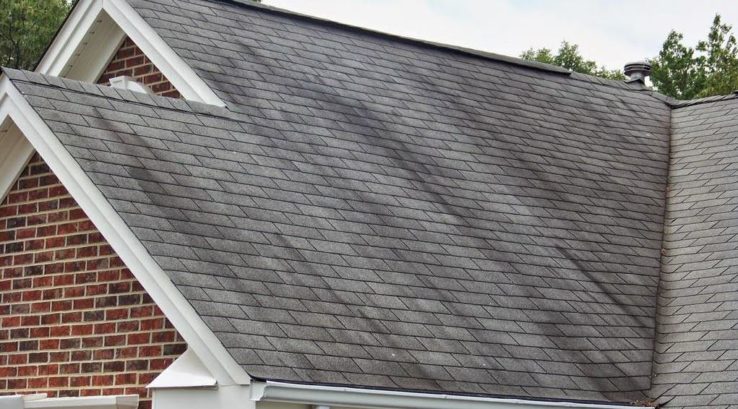If you live somewhere that sees a lot of humidity, you may have noticed some roofs in the neighborhood marred by unsightly black streaks. Black streaks on roof shingles are caused by algae growth, although many people assume they’re from dirt, mold, or mildew. This algae growth isn’t necessarily a sign that your roof is defective, but it is a good idea to treat it early because it may hamper the curb appeal of your property.
What Causes Black Streaks on Roof?
The black algae on roof shingles in the United States is usually cyanobacteria Gloeocapsa magma algae. These algae are most commonly found in warmer, humid parts of the country and are particularly common on north-facing roofs. The algae spread via the air and should not be confused with the green algae that thrive on moisture and grow on overhangs.
How to Treat Black Streaks on Roof
When you notice black algae on roof shingles, treat it promptly. The algae is not harmful and won’t damage your roof, but it is unsightly. If you’re hoping to sell your home at some point in the near future, you’ll want to make sure the roof looks as good as possible. It’s easier to treat the algae early, when there are only small streaks of it, than clear a large patch once it’s spread.
Safety First
Working at heights is dangerous. If you don’t have experience working on a roof or lack the correct safety equipment, don’t try to treat the algae yourself. Instead, call a qualified roofing professional to clean your shingles for you.
How to Lighten the Appearance of Algae
To reduce the appearance of black algae on your roof, use a mixture of bleach and water.
- Cover all vegetation located close to the roof, to reduce the risk of overflow/run-off harming those plants.
- Make a 1:1 mixture of water and bleach.
- Using a spray bottle, spray the affected area of the roof.
- Let the bleach work for about 20 minutes.
- After 20 minutes, spray the roof with copious amounts of water to flush away the bleach.
- If the algae growth is thick or dense, repeat steps 3 -5 to clean the area thoroughly.
- Thoroughly water flowers, grass or greenery close to the home, to remove any traces of bleach.
Do not scrub the roof or use a power washer. Doing so may damage the shingles and reduce the life-span of the roof.
Once algae has appeared on a roof, regrowth is likely. This means you may have to clean the roof regularly to prevent black streaks on your roof from returning.
Take Care of Your Roof
Your roof is one of the most important parts of your home. While you’re cleaning your roof, inspect it for damage. If you see signs of damaged shingles or have other concerns about your roofing, call a professional. While small areas of damage can be repaired, it often makes sense to replace a very old roof. Contact Thompson Creek today to learn about the visually appealing and energy-efficient roofing options available.


